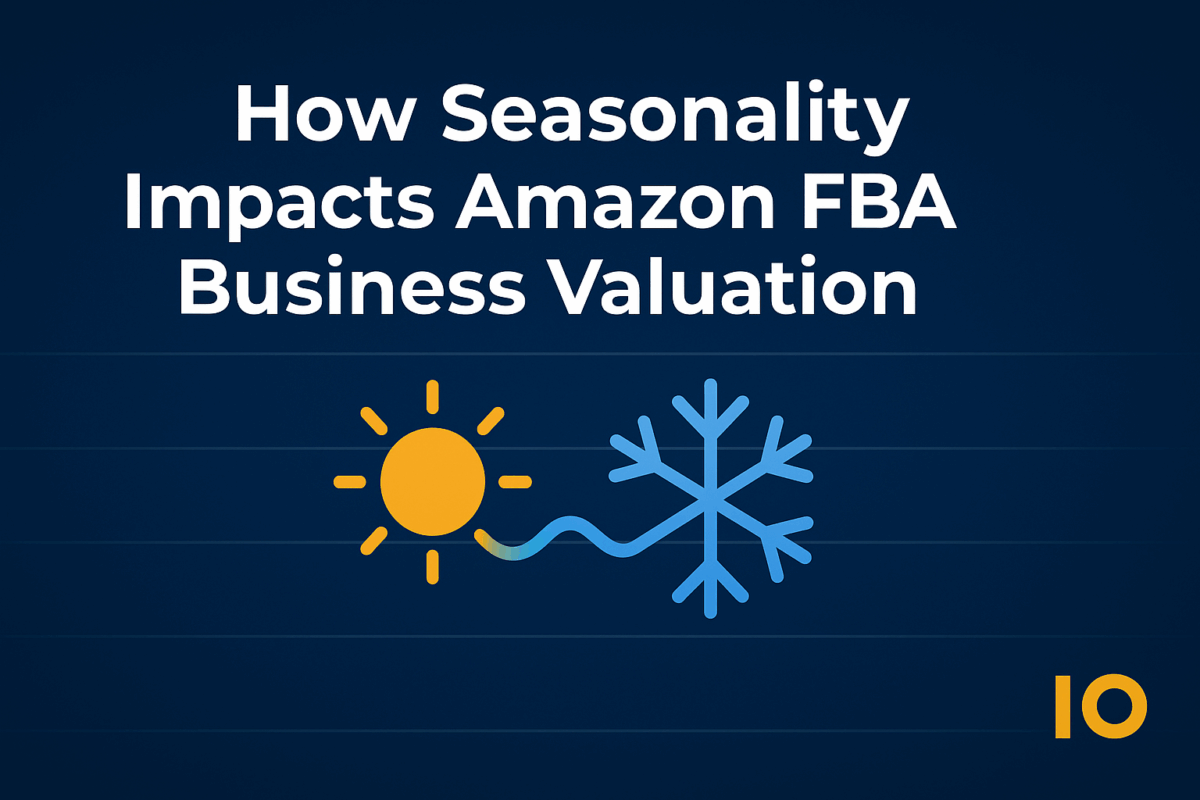Introduction
Expanding advertising efforts across Amazon’s European marketplaces can be a profitable venture, but it comes with diverse challenges. Sellers often discover that advertising return on investment (ROI) varies widely between the United Kingdom, Germany, France, Italy, and Spain. Each of these major markets has unique characteristics – from differing customer behaviors and language requirements to varying levels of competition and advertising costs. While Amazon’s cost-per-click in Europe tends to be lower on average than in the United States, that doesn’t automatically guarantee better ROI. The effectiveness of an ad spend in Europe depends heavily on local market nuances. To maximize profitability, sellers must tailor their advertising strategies to each country’s conditions. Below, we explore key ROI considerations in each of the five major European Amazon marketplaces and discuss how to address the concerns specific to each region.
United Kingdom: A Mature Market with High Competition
The UK is one of Amazon’s most established and competitive marketplaces in Europe. With a large base of enthusiastic online shoppers and a high rate of Prime membership, the sales opportunities are significant – but so are the advertising costs. The United Kingdom consistently reports one of the highest median cost-per-click (CPC) rates in Europe for Amazon Ads. In fact, UK advertisers often pay nearly double per click compared to what sellers pay in emerging European markets like Italy or Spain. This high CPC environment is a direct result of the marketplace’s maturity and saturation. Countless sellers (both domestic and international) vie for British consumers’ attention, driving up bids on popular keywords.
For advertisers, the high competition in the UK means ROI can quickly shrink if campaigns are not optimized. A key concern is that expensive clicks need to convert into sales at a high rate; otherwise, the advertising cost of acquiring each customer may outweigh the profit from the sale. British consumers, while eager online shoppers, have no shortage of options on Amazon. They tend to compare prices and read reviews diligently. To maintain profitability in this market, sellers should focus on conversion rate optimization alongside their bidding strategy. This includes ensuring that product detail pages are thorough and localized (even though English is the language, UK shoppers expect measurements, terminology, and even humor or tone tailored to UK norms). Investing in high-quality images, competitive pricing, and strong social proof (reviews and ratings) can help turn more of those costly clicks into paying customers, improving overall ROI.
Another consideration in the UK is seasonality and timing. The UK market responds strongly to seasonal sales events (like Black Friday, Cyber Monday, and Boxing Day), during which advertising costs can spike even higher due to competition. A strategic approach is to allocate budget wisely throughout the year – ramping up when shoppers are most likely to buy, and adopting a more conservative spend during slower periods. Sellers should also monitor their Advertising Cost of Sales (ACoS) closely in the UK. Given the higher ad costs, keeping ACoS within profitable levels requires constant tweaking of campaigns (pausing keywords that overspend, refining targeting to the most relevant audiences, and testing different ad creatives for better engagement). In summary, success in the UK Amazon Ads space comes from balancing aggressive competition with equally aggressive optimization. The market can deliver substantial sales volume, but only to those who continually fine-tune their advertising for efficiency.
Germany: Europe’s Giant with a Demand for Quality
Germany is another powerhouse Amazon marketplace – by some measures, even larger than the UK in terms of e-commerce revenue. German consumers flock to Amazon for a wide range of products, making it a lucrative arena for sellers. Advertising in Germany, however, brings its own ROI considerations. The competitive intensity is high (though slightly less expensive per click than the UK on average), and the audience has distinct expectations. The median CPC in Germany’s Amazon marketplace is typically a bit lower than in the UK, but it still ranks among the highest in Europe. This means advertisers can’t afford to be complacent; inefficient ad spend in Germany will rapidly eat into profit margins just as it can in the UK.
One of the standout factors in Germany is the importance of localization and precision. German shoppers are known for their attention to detail and preference for comprehensive product information. A direct translation of an English listing is often not enough – the wording, tone, and content need to feel native to instill trust. If your ads and product pages are not expertly translated and tuned to the German language (including using the correct local keywords), you may get plenty of clicks but few conversions. Those unconverted clicks represent wasted ad spend and a declining ROI. Thus, a major profitability consideration for Amazon Ads in Germany is the conversion rate of traffic driven by ads, which hinges on the quality of localization. Sellers have found that investing in professional translations and country-specific content can significantly improve the return on their ad investments by converting more browsers into buyers.
Another aspect is Germany’s regulatory and competitive environment, which, while not directly part of ad campaigns, indirectly influences ad ROI. Germany has strict product regulations (for example, around product recycling and safety) and high customer expectations for reliability. If a seller faces logistical issues or compliance problems, it can lead to stock shortages or listing suspensions – scenarios that waste advertising dollars. Additionally, German consumers have alternatives to Amazon (such as local e-commerce sites and established brick-and-mortar brands), which means Amazon ads must work hard to prove value. To maintain profitability, advertisers in Germany should emphasize quality and trust in their ads. Highlighting aspects like warranty, certifications, or outstanding customer service can bolster a consumer’s confidence to purchase, thus making each click more likely to result in a sale.
In practice, optimizing ROI in Germany often involves meticulous campaign segmentation. Many sellers separate their advertising campaigns for Germany, targeting specific regions or states (Länder) or using ads that cater to local events and holidays (for instance, running promotions for German Unity Day or tailoring winter product ads to Germany’s long winter season). By aligning ad content with local interests and calendar events, advertisers can improve engagement and conversion rates. Finally, just as in the UK, monitoring metrics and adjusting is crucial. If a particular keyword in German is costing too much per click without sales, it might need pausing or refinement (perhaps the ad copy needs to better match the keyword’s intent). Continuous improvement is key – Germany’s large audience will reward sellers who invest the effort to meet its expectations, with strong sales and solid ROI, but it will punish a one-size-fits-all approach with poor returns.
France: Navigating a Market with Local Preferences
France represents a sizeable Amazon market in Europe, though one where Amazon faces more competition from local retailers compared to the UK or Germany. French consumers do use Amazon extensively, but they also have homegrown alternatives (like Cdiscount or Fnac) and a strong sense of local identity. For advertisers, this means that achieving great ROI on Amazon.fr requires understanding and respecting French preferences and shopping habits. The median cost-per-click in France for Amazon ads generally falls in a middle range – not as high as the UK or Germany, but higher than emerging markets like Italy and Spain. This moderate CPC suggests a slightly less saturated ad environment, but it doesn’t automatically translate to easy wins; relevance and resonance of ads are critical for conversion.
A primary ROI concern in France is cultural and linguistic relevance. Simply put, ads must speak the customer’s language – literally and figuratively. All too often, international sellers might reuse their English ad campaigns or do a quick translation to French and call it a day. This approach can lead to disappointing results. French shoppers respond more positively to ads and product content that feel authentically French. This means using not just the French language, but the right tone (for example, the level of formality), measurements in metric, and references that make sense locally. An ad that feels foreign or automated in translation can undermine trust, yielding plenty of clicks but few actual sales. On the other hand, a well-localized advertisement – perhaps highlighting a product’s usefulness in a French context or incorporating seasonal events popular in France – can boost click-through and conversion, enhancing ROI.
Another consideration is that French consumers tend to value quality and brand reputation. Reviews carry weight, and building a strong brand presence in France can improve the efficiency of ad spend over time. If a shopper recognizes your brand and trusts it, they are more likely to buy after clicking an ad, which means money well spent. New sellers in the market might initially face an uphill battle in ROI because they have to spend more on ads to gain visibility and build up reviews. It’s important to factor in this ramp-up phase when calculating profitability – ROI might start lower and improve as your product gains traction and organic ranking.
Advertisers in France should also be mindful of the competitive landscape. While Amazon is huge, some product categories have fierce competition from outside Amazon or a few dominant Amazon sellers. Identifying niches or gaps in the market can lead to much better ROI. For instance, if you find that your product category on Amazon.fr isn’t overly crowded, you might enjoy lower CPCs and a better return. Conversely, if you’re entering a saturated category, be prepared for higher advertising costs and consider differentiation strategies (unique value propositions in your ad copy, or bundling products, etc.) to entice buyers.
In summary, maintaining profitability with Amazon Ads in France comes down to adapting to the local market. Use French-specific marketing strategies – engage with customers in French on Q&A and in reviews, consider France’s shopping holidays and national events for promotions, and ensure your ads highlight what French buyers care about. When your advertising feels native to France, your ROI stands a much better chance of remaining healthy.
Italy: Emerging Opportunity with Lower Ad Costs
Italy’s Amazon marketplace has grown rapidly in recent years, becoming a vibrant platform for sellers. Unlike the UK, Germany, or France, the Amazon.it market is relatively newer and less saturated, which comes with distinct advantages and challenges for advertising ROI. One immediately attractive aspect for advertisers in Italy is the comparatively low cost-per-click. In fact, Italy often boasts one of the lowest median CPC rates among the major European Amazon countries. Sellers can typically acquire clicks for a fraction of what they would cost on Amazon.co.uk, for example. This means even modest advertising budgets can go further in terms of generating traffic. On the surface, such low advertising costs suggest a high potential ROI – and indeed, many sellers find that Italy can deliver profitable ad campaigns, especially when they first enter the market and face limited competition.
However, low CPC alone doesn’t guarantee profitability. Italian consumers have their own shopping behaviors and expectations that advertisers must account for. E-commerce in Italy historically lagged behind some other European nations in adoption, though it’s been catching up quickly. Many Italian shoppers are now comfortable with Amazon, especially younger consumers and those in urban centers. Yet, trust and familiarity remain factors that can influence conversion rates. To capitalize on Italy’s low advertising costs, sellers should invest in building trust and relevance. This starts with language: all ads and product listings should be in Italian (not a mishmash of auto-translated text). Italians appreciate when marketing speaks to them naturally – consider, for example, how an Italian family might use your product, and reflect those use-cases or benefits in your ad copy and images. Using Italian keywords that locals actually search for (which might differ from direct English translations) can also improve ad performance, ensuring your low-cost clicks are coming from genuinely interested shoppers.
Another profitability consideration in Italy is the scale of the market. While growing, Italy’s total Amazon shopper base is smaller than that of Germany or the UK. This means that even if your ROI (ratio of profit from sales to ad spend) is strong, the absolute volume of sales might be limited by the market size. Sellers should set realistic expectations: you might not spend as much on ads in Italy as you would in larger markets, simply because there’s only so much traffic available for your niche. That’s not necessarily a problem – in fact, it can keep your costs very efficient – but it does mean Italy is often one part of a multi-country strategy rather than the sole focus for pan-European sellers. Successful advertisers often use Italy as an opportunity to scale profits efficiently. They take the winnings from Italy (where each euro spent on advertising might yield a higher return) and use them to support efforts in more expensive markets.
It’s also worth noting that competition, while lighter than in the big three (UK/DE/FR), is increasing. Categories that were wide open a few years ago now have more sellers vying for the Italian customer. Fortunately, the generally lower CPCs indicate there are still opportunities to advertise profitably. To maintain an edge, keep an eye on your campaign data: if certain keywords start rising in cost, adjust your bids or focus on longer-tail keywords (specific, less common search terms) that remain inexpensive. Leverage Amazon’s features like Sponsored Products and Sponsored Brands in Italy to increase visibility – since these ad placements are cheaper here, you can often secure top-of-search placement for a reasonable cost, capturing shoppers’ attention early. In conclusion, Italy offers a favorable playing field for ROI-focused advertisers, provided they localize content for the Italian audience and are mindful of the market’s scale limitations. It’s a chance to gain market share and profits with relatively low advertising investment, building a strong foundation as the Italian e-commerce sector continues to expand.
Spain: Growing Market with High ROI Potential
Spain is another rapidly growing Amazon marketplace in Europe that presents enticing prospects for sellers concerned with advertising profitability. Much like Italy, Amazon.es features lower advertising costs compared to the veteran markets of the UK and Germany. Spanish Amazon ads have historically enjoyed low median CPC rates – among the lowest in Western Europe. This means that, from a pure cost perspective, Spain allows advertisers to obtain traffic to their listings quite economically. A euro spent on advertising in Spain can often yield more clicks than the same spend on Amazon’s larger European sites. This cost advantage is a great starting point for ROI, but success in Spain requires understanding the local market dynamics just as much as in any other country.
One important factor is the linguistic and cultural context. Spain’s primary language for commerce is Spanish (Castilian Spanish), and while many Spaniards understand English, marketing in Spanish is essential to achieve good conversion rates. It’s also worth acknowledging that Spain is a diverse country with regional languages (Catalan, Basque, Galician, etc.), but for Amazon purposes, Spanish will reach the broadest audience. Ensuring your ads and product listings are not just translated, but written in a way that resonates with Spanish shoppers, will significantly improve your ad effectiveness. Spanish consumers appreciate when a brand makes the effort to speak their language and address their needs. For example, if you sell kitchen appliances, an ad referencing how it simplifies a “tarde de tapas” (tapas afternoon) might feel more engaging and relevant than a generic statement copied from another market’s campaign. When your advertising content aligns with local culture or values – perhaps highlighting quality (calidad), family, or other themes popular in Spain – those clicks you’re paying for are more likely to convert into sales, boosting ROI.
Spain’s e-commerce growth has accelerated, particularly in the wake of recent years where more people turned to online shopping. However, like Italy, the overall e-commerce penetration, while rising, is still catching up to the levels seen in the UK or Germany. For advertisers, this means the Spanish market may not yet deliver the same sales volume as those larger markets, but it can deliver very efficient sales. Many sellers report strong returns on ad spend in Spain because competition is manageable. There are fewer sellers aggressively bidding up ad prices, and those who do invest in localized advertising often find themselves reaching a receptive audience. With fewer competitors using advanced Amazon Ads tactics, there’s an opportunity for savvy marketers to dominate their category’s search results without exorbitant costs. This can lead to a high return on ad spend, as each sale comes at a relatively low advertising cost.
Nonetheless, to sustain profitability in Spain, one must pay attention to the market’s evolution. The low CPC environment might not last forever; as Amazon.es grows and more international sellers enter, advertising costs could rise. It’s wise to take advantage of the current situation to establish a strong presence (and review base) in Spain, effectively locking in customer loyalty early. Another tip for maximizing ROI is to experiment with Amazon’s newer ad formats in Spain. Features like Sponsored Display or even Amazon DSP (Demand-Side Platform) are not as saturated in Spain – meaning you might reach customers via retargeting or lifestyle-oriented ads more cheaply than elsewhere. Diversifying your ad strategy in this way can bring in additional sales at a low cost, improving overall ROI.
In summary, Spain offers a promising balance of low advertising costs and growing consumer demand. Sellers who localize their advertising approach and remain responsive to trends in Spanish consumer behavior can find that Amazon Ads in Spain deliver excellent profitability. It’s about combining cost advantages with cultural connection – doing so turns Spain into a market where your advertising spend truly pays off.
Conclusion: Tailoring Strategies for ROI Across Europe
Advertising on Amazon in Europe is not a one-size-fits-all endeavor. As we’ve seen, the United Kingdom, Germany, France, Italy, and Spain each present distinct landscapes for pay-per-click advertising, and each demands a strategic approach to maintain healthy ROI. The common thread across all these markets is the need for localization and adaptability. Sellers who treat Europe as a monolithic market often burn through their ad budgets with subpar results; those who adjust their tactics to each country, however, are rewarded with more efficient campaigns and better profitability.
To ensure your Amazon advertising remains profitable across these markets, consider the following overarching strategies:
- Budget Allocation by Market: Don’t blindly split your ad budget equally across countries. Instead, allocate more to markets where you see stronger ROI or higher sales potential, and adjust spending in markets where the cost of ads is high. For instance, you might devote a higher portion of budget to Spain or Italy when testing, since clicks are cheap, and use the data (and profits) from those campaigns to support refined campaigns in the UK or Germany where each click is dearer.
- Local Optimization: Invest time in making your ads and product listings feel native to each country. Whether it’s language accuracy, using local units of measure, or referencing local events/holidays, these details can dramatically improve conversion rates. Higher conversion means better ROI – you’re getting more sales for the same ad spend.
- Monitor Metrics and Adjust: Keep a close eye on key performance indicators like ACoS (Advertising Cost of Sales) or ROAS (Return on Ad Spend) for each marketplace individually. What’s considered a good ACoS in one country might be different in another due to varying margins and costs. Regularly review your campaigns and be ready to tweak bids, pause keywords, or try new keywords based on the trends you see in each locale. For example, if France is yielding a solid ROAS, you might scale up there, whereas if the UK is facing rising costs due to competition, you might narrow your targeting to the most profitable products or keywords.
- Stay Informed and Agile: European markets can change with economic conditions, new Amazon policies, or shifts in consumer sentiment. Stay informed about things like changes in VAT or advertising fee structures, major economic shifts, or Amazon program updates (such as introduction of new ad types or tweaks to the algorithm) in each country. Being early to adapt – say, adopting a new ad feature or responding to a competitor’s movement – can keep you ahead of the curve and maintain profitability.
Ultimately, achieving strong advertising ROI across the European Amazon markets comes down to understanding the balance of cost versus return in each environment. The UK and Germany may require more careful budget management and higher bids, but they offer access to huge customer bases. France requires cultural savvy to unlock its full potential. Italy and Spain offer cost-effective growth but need localization to truly convert traffic into sales. By recognizing these nuances and treating each marketplace as a distinct puzzle to solve, sellers can create an Amazon advertising strategy that maximizes profitability. The reward for this thoughtful, tailored approach is a robust pan-European Amazon business where advertising is not an expense to fear, but a well-calibrated investment driving continuous growth.





